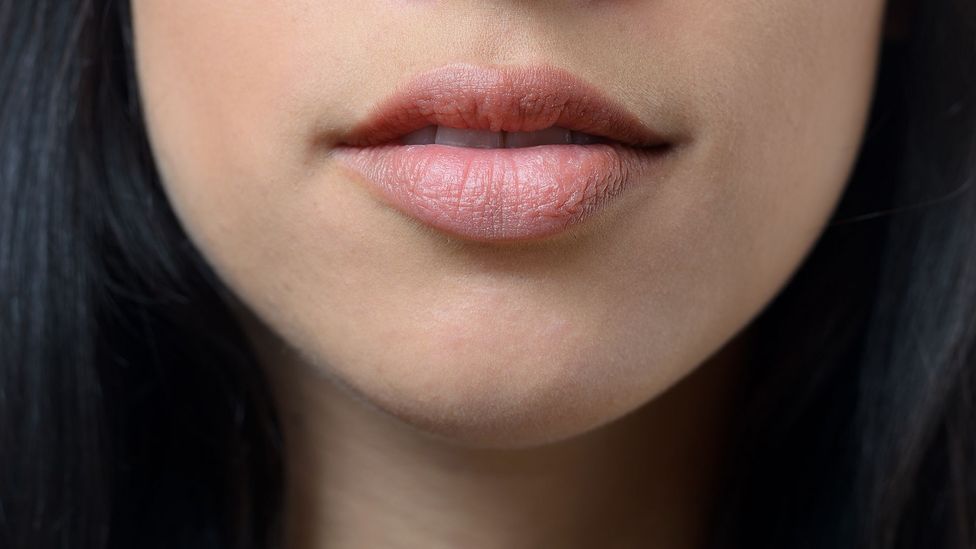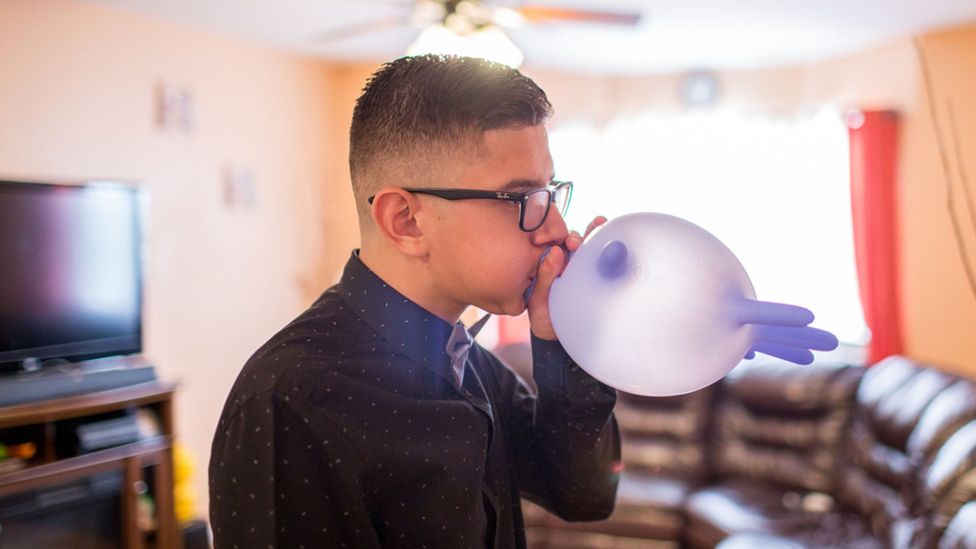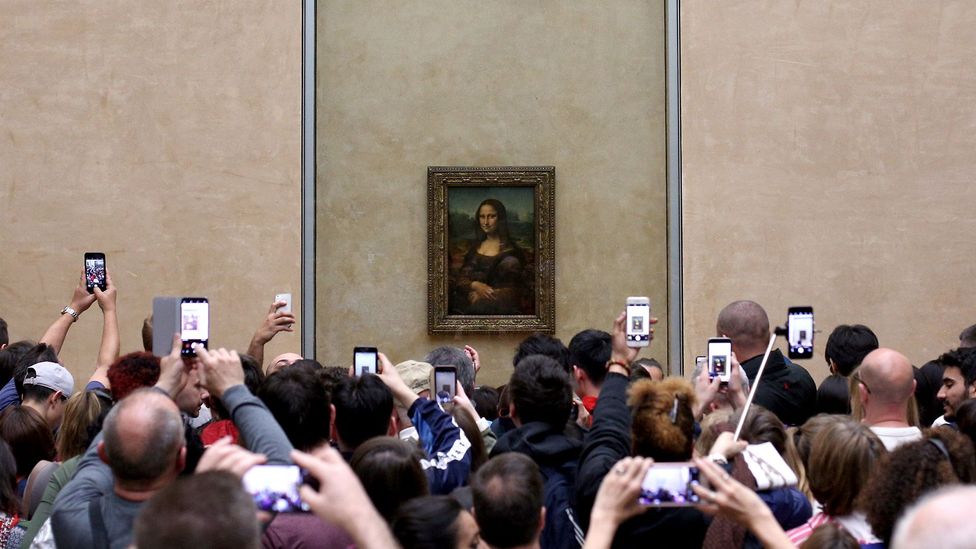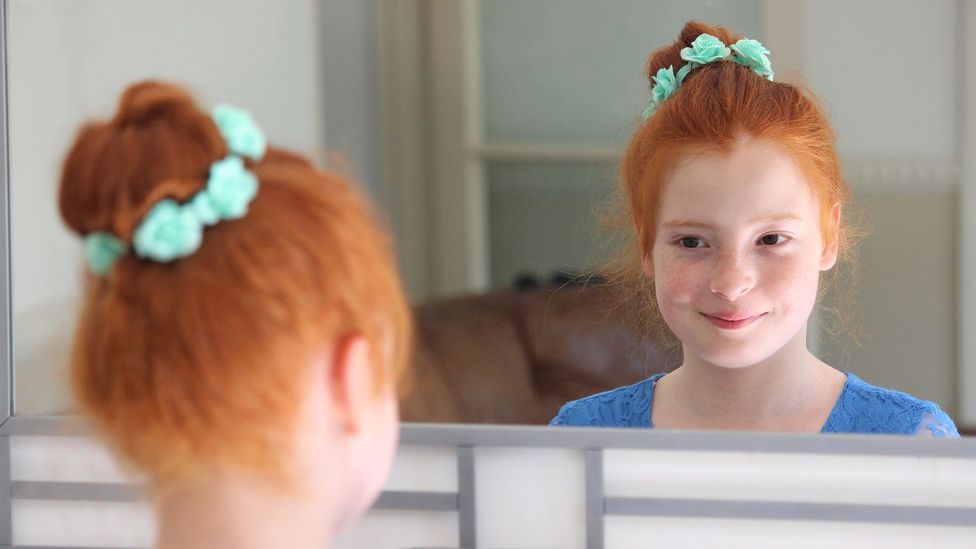I May Litrally Never Smile Again
The people who cannot smiling
(Image credit:
Getty Images
)

Smiling is a fundamental part of how we interact with other people, merely what if you were not able to do it?
K
Kevin Portillo practises smiling every solar day at home. Usually afterward brushing his teeth. Or when stopping past the bathroom, or anywhere with a mirror.
He hooks an index finger into each side of his mouth and pulls gently upward. He puckers his face into a kiss, then opens wide into an O, trying to limber up his facial muscles. He practises both the Mona Lisa – slight, airtight-lip – and a broad, toothy smile.
At least, he'southward supposed to practice his exercises every day. Being 13, he sometimes forgets, though he understands their importance.
Yous might also like:
- Why all smiles are not the same
- The smiles that are anything simply welcoming
- Our facial expressions don't reflect our feelings
"I need to stretch my cheeks," he says. "I do information technology for a couple minutes. I have to exercise it every single day." He exercises so much that his jaw sometimes hurts.
Kevin was born in New Jersey with a rare cancerous vascular tumour, a kaposiform haemangioendothelioma, covering the left side of his face, squeezing shut his left heart and pushing his olfactory organ to the correct. Immediately after his birth, doctors whisked him away to another hospital in another state – the Children'southward Infirmary of Philadelphia. His mother didn't see him once more until he was eight days quondam.
The doctor told Kevin's parents that the chance of him surviving was slim.
But survive he did. However, the big neoplasm and the damage from its treatment prevented him from existence able to do i of the most fundamental things humans do.
Smile.
On a physical level, a smile is clear enough. There are 17 pairs of muscles controlling expression in the human being face, plus a atypical musculus, the orbicularis oris, that runs in a ring effectually the rima oris.

Kevin Portillo has to comport out a range of exercises to maintain his ability to smile (Credit: Natalie Keyssar)
The basic upward curving smile is achieved primarily past two pairs of muscles known as the zygomaticus major and pocket-sized. These connect the corners of the rima oris to the temples, tugging lips up – ofttimes accompanied, depending on the underlying emotions and thoughts, past the levator labii superioris, raising the upper lip, and other muscles of the confront.
Information technology is when nosotros go out the realm of physiognomy, however, that the grinning becomes enigmatic. This contraction of various facial muscles resonates across the unabridged arc of human history, from the grin Greek kouros sculptures of 2,500 years ago right up to emoji, those little images that pepper our online communications.
There are differences in gender (mostly, women grinning more than) and culture. Smiles are definitely communicative – people smiling more when in public than they do when alone, and more when interacting with others than when not.
Scientists have shown that smiles are far easier to recognise than other expressions. What they don't know is why.
"Nosotros can practise actually well recognising smiles," says Aleix Martinez, a professor of electrical and computer technology at Ohio Country University and founder of its Computational Biology and Cerebral Science Lab.
"Why is that true? Nobody can answer that correct at present. We don't know. I can prove you an paradigm for just x milliseconds and you can tell me information technology'due south a grinning. It does not work with any other expression."
Bafflingly, fright takes an exposure fourth dimension of 250 milliseconds to recognise – 25 times equally long equally a smile. "Recognising fear is fundamental to survival, while a smiling…" muses Martinez. "But that's how nosotros are wired."
Other studies have shown that smiling faces are also judged as more familiar than neutral ones. Scientists such as Martinez theorise that smiles – every bit well as frowns and other facial expressions – are remnants of humanity's afar pre-linguistic heritage. Human language started developing every bit far back as 100,000 years ago, only our facial expressions achieve back farther nonetheless, perhaps as far every bit some of our primeval human ancestors.
"Earlier we could communicate verbally, we had to communicate with our faces," Martinez says.
Interpreting the nuances in a smile is a challenge whether dealing with art history or interpersonal encounters or the cut edge of artificial intelligence. A 2022 study, for case, questioned thousands of people in 44 cultures well-nigh sets of photographs of 8 faces – four smiling, 4 not.

We are programmed to recognise a smile in a tiny fraction of a second, much more quickly than other emotions (Credit: Getty Images)
Well-nigh of these people deemed the grin faces to be more honest than the non-grin ones. This divergence was huge in some countries, such as Switzerland, Australia and the Philippines, but small in others, such as Islamic republic of pakistan, Russian federation and French republic. And in a few countries, such as Islamic republic of iran, Bharat and Zimbabwe, there was no trustworthiness benefit to smiling at all.
Why? That question is also complicated, but in essence, the researchers concluded it has to do with whether a society is prepare so that its members assume that other people are dealing with them honestly. "Greater corruption levels decreased trust granted toward smiling individuals," the authors concluded.
That attitude harks back to a very old view of smile being opposed to pious solemnity. When piety was an overarching value, smiles were, well, frowned upon as the forerunner of laughter, which was held in truthful disdain. Prior to the French Revolution, broad smiles in art were overwhelmingly the realm of the lewd, the drunk and the boisterous lower classes.
Eastern religions, all the same, often utilize the smile to denote enlightenment. The literal proper name of the thousand-year-old Flower Sermon, which describes the origin of Zen Buddhism, is "Pick up blossom, subtle grinning". The Buddha and various religious figures were depicted with serene smiles, though the original Buddhist texts are equally devoid of smiling as Western scripture. Jesus weeps but never smiles.
Nor did Kevin Portillo, not fully. At five weeks' old he was already a week into chemotherapy with vincristine, an anticancer drug so powerful it can cause bone pain and pare rashes. Doctors warned his mother, Silvia Portillo, that the treatment might leave him bullheaded, or deaf, or unable to walk.
Whether stunted due to the neoplasm or killed by the chemotreatment, Kevin's seventh cranial nervus withered. That nerve originates at the brainstem and then branches out across the face. Information technology is susceptible not only to tumours, as in Kevin'south case, merely as well to rare atmospheric condition such as Moebius syndrome, a congenital facial paralysis acquired past missing or stunted cranial nerves. Yous can't smile, frown, or movement your eyes from side to side.
"You lot essentially take a mask on your face up," says Roland Bienvenu, 67, a Texan with Moebius syndrome.
Without being able to smile, others "tin become the incorrect impression of y'all", he says. "You can almost read their thoughts. They wonder, 'Is something incorrect with him? Has he had an blow?' They question your intellectual ability, call back maybe he's got some intellectual inability since he'due south got this bare wait on his face."
The challenges stemming from lack of a smile are frequently compounded. When people have a medical status severe enough to keep them from smiling, other difficulties tend to be involved.
"He was unlike than the other kids," says Silvia of her son Kevin. "He was fed for four years through the G-tube in his stomach. He wasn't able to have a normal life, because every few hours he had to be continued to the machine to be fed." Little kids, being curious, would look and ask what happened to him, she says.

The linguistic communication conveyed in acts like grin are a link to our earliest ancestors (Credit: Getty Images)
Simply even once Kevin was able to swallow food, go to school and enjoy usual childhood pastimes – he became passionate about soccer and playing the drums – he still felt the tremors of having a half-grin in a earth solidly established upon "a cultural expectation of pearly perfection", as Richard Barnett writes in his volume The Grin Stealers.
"I couldn't smile on my left, I merely smiled on my right," says Kevin. "My grinning was weird… people kept asking what happened to me, why I'1000 like this. I keep telling them I was similar this when I was born."
Facial paralysis carries no telltale equipment, dissimilar some other disabilities, and is rare plenty that the unaffected population is not mostly familiar with the conditions that cause it, whether congenital or appearing later in life.
One of the latter is Bell's palsy, an inflammation of the sheathing around the facial nerves on i side that paralyses one-half the face, causing the middle and corner of the oral cavity to droop. It commonly strikes men and women between the ages of 15 and 60.
In virtually cases temporary, Bong's palsy by and large slowly goes abroad equally mysteriously as it arrives. Doctors suspect it is caused by a viral infection. In that location are also traumatic events – car wrecks, sporting accidents – that damage nerves and muscles in the face up, plus congenital irregularities such equally scissure palate.
A common condition that can also touch on the smiling is stroke. A sagging smiling or confront drooped on one side is ane of three signs that a person has had a stroke and needs firsthand emergency care (the other two are weakness or numbness in one arm and slurred or garbled speech).
While losing a grinning is a serious blow at whatever age, it can have a particular bear upon on younger people, who are starting out, forming the bonds that will carry them through the rest of their lives.
"Information technology'south a huge trouble," says Tami Konieczny, supervisor of occupational therapy at the Children'due south Hospital of Philadelphia (CHoP). "When you look at somebody, the outset matter you see is their face, their ability to smile or not smile, or an asymmetrical smile. It's your social world.
"If someone can't read your facial expressions, so information technology's difficult to be socially accepted. It'southward hugely devastating for kids. I had kids photoshopping their pictures. They are taking mirror images of their expert side and copying it, photoshopping their own pictures earlier posting them to social media."

In a survey, people from varying cultures found smiling faces to be more trustworthy (Credit: Getty Images)
Photoshopping might work on Facebook. But fixing a smiling bisected by nerve damage and subsequent muscle loss is far more complicated. Sometimes, it requires multi-phase plastic surgery spread out over a year or more.
"It's incredibly of import to be able to interact with humans on a confront-to-confront footing," says Ronald Zuker, a Canadian plastic and reconstructive surgeon who pioneered facial reanimation procedures. "If y'all don't have the ability to smiling, you are at a disadvantage. People cannot empathize your inner emotions. They mistake your advent for beingness disinterested, or not likewise bright, or not very involved in the conversation."
Still, some parents prefer to expect until their children are older and can participate in the determination.
"If families want to expect, that's perfectly fine," says Zuker. "Sometimes when a kid is nine or x they look in the mirror and say, 'You know, I really want this surgery.' That'due south the time to do it."
Which is what happened with Kevin. He was doing well, "fifty-fifty with that scar on his face up, has always been pop at school", says his mother. "He's always been a happy kid."
Just in that location were kids that fabricated fun of him, she says. One solar day when he was about nine, he was sorry. "I said, 'What happened to yous?' He said, 'Some kids, they're not my friends. They laugh at me because I look funny.' Information technology was really hard for u.s. as parents."
At age 10, Kevin told his parents that he wanted to practice what most people do without giving information technology a second thought. He knew it would be a long, painful, hard procedure, but it was i he wanted to undergo.
In October 2015, Phuong Nguyen, a plastic surgeon and reconstructive surgeon at CHoP, began work by removing a section of sural nerve from Kevin'south right ankle and attaching information technology to the working right side of his confront, running information technology underneath his upper lip, to the paralysed left. He then allow it regrow for almost a year, the nerve fibres advancing about a millimetre a twenty-four hours (well-nigh 24,000 times slower than a snail's footstep).
During that time, doctors would periodically tap areas of Kevin's cheek, to run into if the nerve was taking. "When it tingles, you know the nerve is growing," says Nguyen.

In some eastern cultures, smiling is seen as a form of enlightened wisdom (Credit: Getty Images)
Removing that nervus did cause a pocket-sized patch of peel on Kevin's talocrural joint to go numb. Simply as he was notwithstanding growing, the numb patch began to shrink as the neural network took over its office.
Once Nguyen was certain the nerve was in place and operation, it was time for the 2nd phase of the surgery.
One morning in Baronial 2016, he took a regal mark and drew a pair of parallel lines, marker the location of a prime artery, and an arrow: the vector Kevin's smile would take.
Nguyen removed a 12cm (four.8in) segment of muscle, forth with a department of avenue and vein, from the inside of Kevin'south left thigh, securing it in place with a customised split that hooked into Kevin's oral fissure.
Over the next year, Kevin began to get motion on the left side of his oral fissure.
"It's really kind of a magical matter," says Nguyen. "We practice this procedure, a number of hours and endeavour, using non a modest amount of resources. Nosotros don't know if it works or non.
"I saw him post-operatively within the first couple of weeks, he looked like he had this big bulgy thing in his cheek. Nothing was moving. Of a sudden, he was smiling. It was a actually incredible moment."
Kevin needed regular occupational therapy sessions to get to where he is today. He performs exercises and puts on purple latex gloves to pull at the inside of his cheek. One exercise involves putting a surface EMG – an oblong black sensor that reads electrical action in the muscle – onto Kevin's left cheek then he tin play video games by smiling and relaxing.
Concrete rehabilitation is the office of the surgical process that often gets overlooked, just it tin can make the difference between success and failure.
"It's huge, particularly with facial palsy," says Nguyen. "Y'all can do technically very sound surgery on ii completely different patients and have 2 completely unlike outcomes based on how involved they are with their ain therapy."
How does Kevin feel about being able to fully grinning later a lifetime of not being able to?
"I do it automatically," says Kevin. "Sometimes when somebody says a joke. It actually feels smashing now. Before it felt weird to not smile. Grinning with both sides of my mouth at same fourth dimension, I feel I'yard i of the other people who smiles right."

Ii pairs of muscles connected to our temples help us form a smile (Credit: Getty Images)
His mother remembers the moment she noticed.
"We were at the table, we were eating," says Silvia. "So we said, 'Kevin, are you moving there?'"
And how does his new smile affect Kevin's life?
"Earlier, I was actually shy," he says. "Right now, I'one thousand less shy, more active."
"I used to have trouble expressing my emotions. Now people know if I'one thousand smiling or laughing. When I laughed, earlier, I laughed weird. And right at present, they know, fleck by bit, that I was trying to smile, I was expressing my laughter and my smile. When I play soccer, and score a goal, I'm happy. I'thou smiling, to tell everybody I scored."
--
This is an edited version of an article originally published past Mosaic, and is reproduced nether a Creative Commons licence. The photographs fall outside of this licence and remain copyrighted equally indicated.
Join 800,000+ Futurity fans past liking u.s. on Facebook , or follow u.s.a. on Twitter .
If you liked this story, sign up for the weekly bbc.com features newsletter , chosen "If You Only Read 6 Things This Week". A handpicked option of stories from BBC Future, Earth, Culture, Capital letter, and Travel, delivered to your inbox every Friday.
Source: https://www.bbc.com/future/article/20180619-the-people-who-cannot-smile
0 Response to "I May Litrally Never Smile Again"
Post a Comment